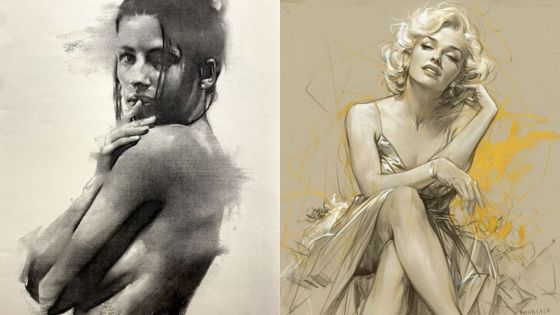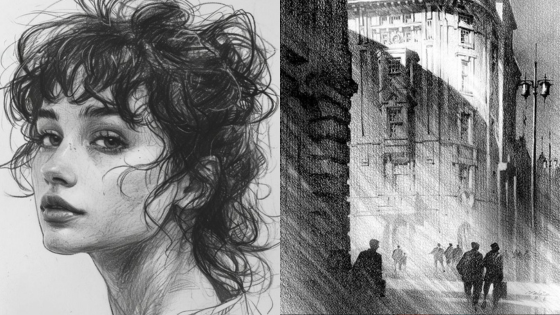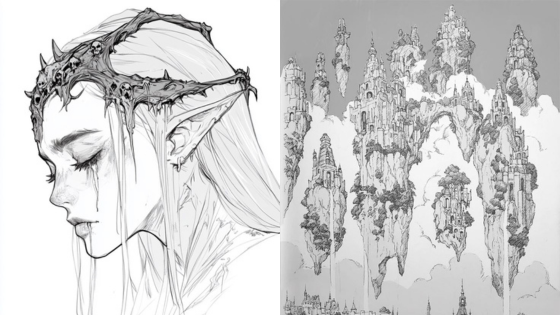Urban sketching is more than just putting pencil to paper; it’s about immersing yourself in the vibrant life of your surroundings and translating that experience into art. By capturing everyday scenes, you can develop your observational skills and create a dynamic portfolio that reflects the world as you see it. Whether you’re sitting in a bustling café or wandering through a city park, each moment presents an opportunity for artistic expression.
Getting started with urban sketching can feel daunting, but it is essential to build a solid foundation in composition and perspective. You will find that your sketchbook becomes a powerful tool for both creativity and mindfulness, allowing you to appreciate the details that often go unnoticed. Furthermore, engaging with the urban sketching community can enhance your growth, opening doors to workshops and events where you can connect with other passionate artists.
Exploring urban sketching transforms your daily experiences into visual stories, enriching your artistic journey. As you refine your skills, you will discover your unique voice within this art form, one that resonates with the rhythm of the city and the pulse of everyday life.
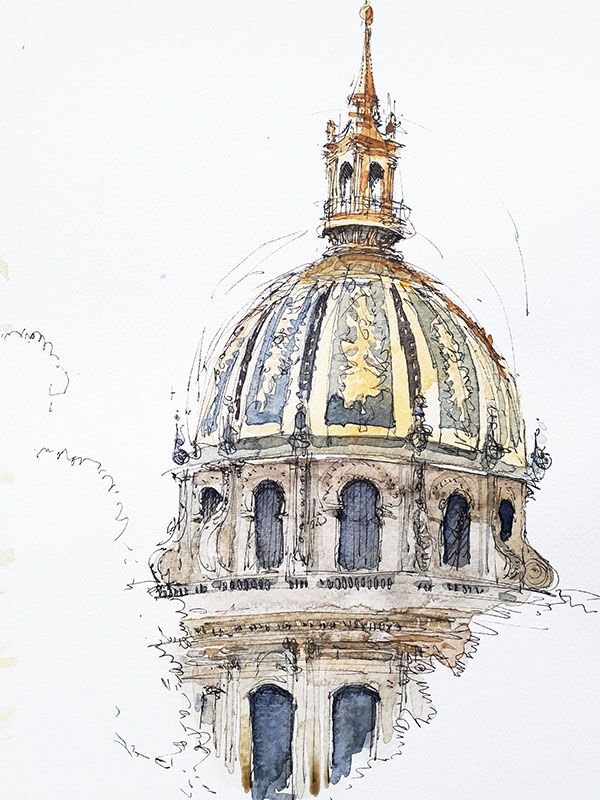
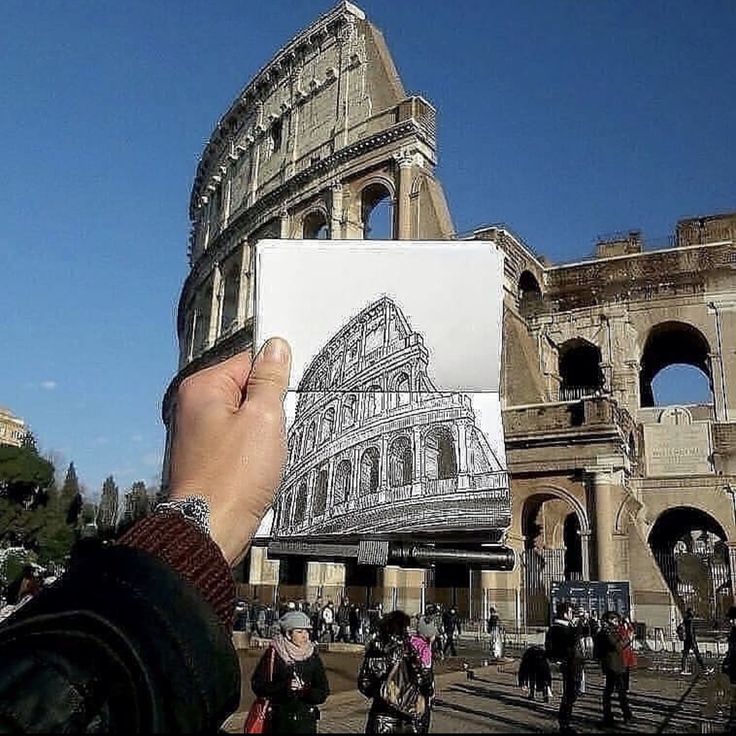
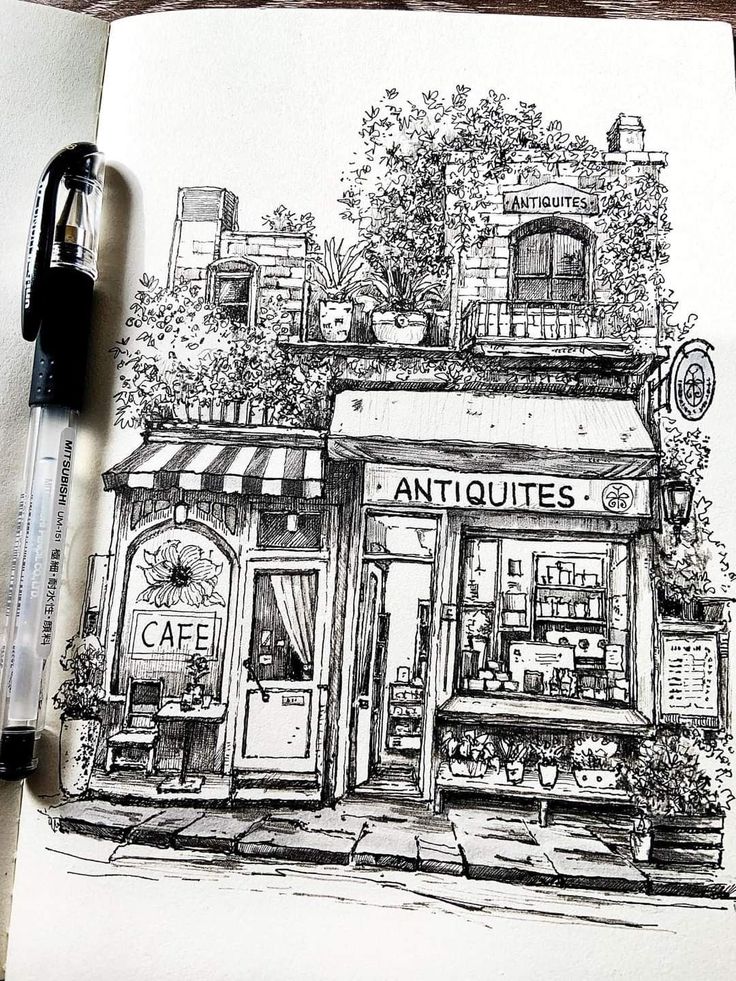
Key Takeaways
- Urban sketching enhances observation and artistic skills.
- A strong foundation in composition improves your sketches.
- Community engagement provides growth and inspiration.
Foundations of Urban Sketching
Urban sketching is an art form that emphasizes observing and capturing the world around you in real-time. Focusing on tools and techniques enhances your skills and allows for more effective expression of what you see.
Understanding Urban Sketching
Urban sketching is characterized by drawing subjects in their natural surroundings, emphasizing spontaneity and observation. This movement encourages artists to sketch in public spaces, fostering a sense of community. Artists often focus on everyday scenes, whether bustling cityscapes or quiet parks. Participating in urban sketching can deepen your observational skills and broaden your artistic perspectives.
Tools for Urban Sketching
Selecting the right tools is vital for successful urban sketching. Here is a list of essential items:
- Sketchbook: Choose one with durable paper that can handle various mediums.
- Pencils: Opt for graphite pencils for outlines and detail work.
- Watercolor Paint: Consider portable watercolor sets for adding color.
- Ink Pens: Waterproof pens are ideal for outlining, as they won’t smudge with watercolors.
- Brushes: A small, versatile brush allows for fine details and broader strokes.
Having these tools at hand enables you to sketch effectively wherever you are.
Mastering Sketching Techniques
Mastering sketching techniques is crucial for growth as an urban sketcher. Here are some methods to practice:
- Gesture Drawing: Quickly capture the essence of a scene to build awareness of proportions and movement.
- Line Work: Practice creating bold, confident lines to convey depth and detail.
- Layering: Use layers of pencil, ink, and watercolor to add complexity to your sketches.
- Composition: Focus on balance and focal points within your sketches to create engaging visuals.
By incorporating these techniques, you can enhance your ability to represent your surroundings with clarity and style.
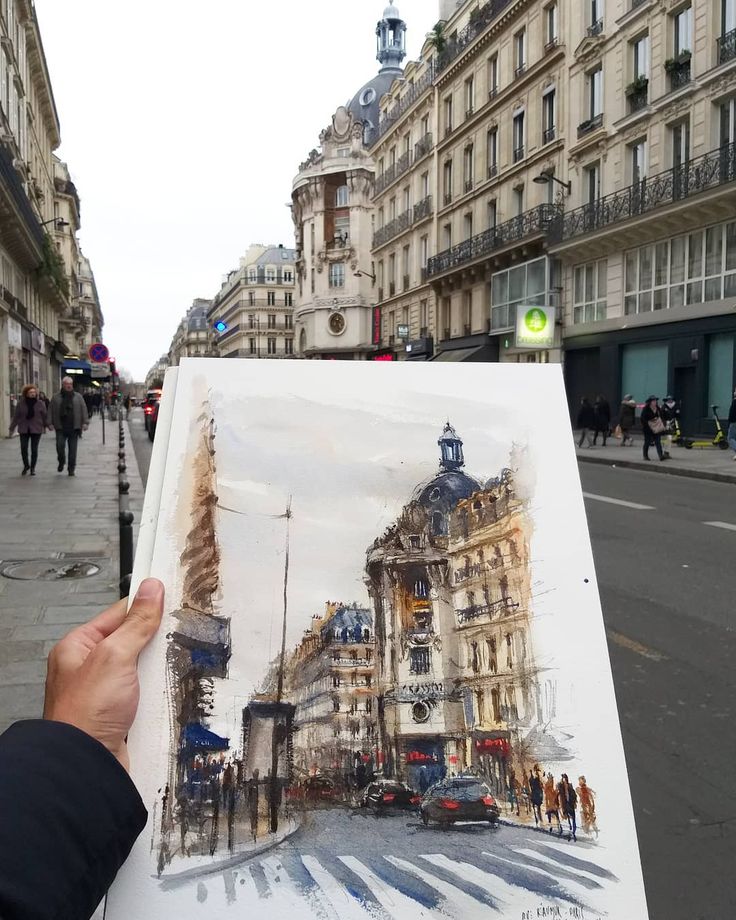
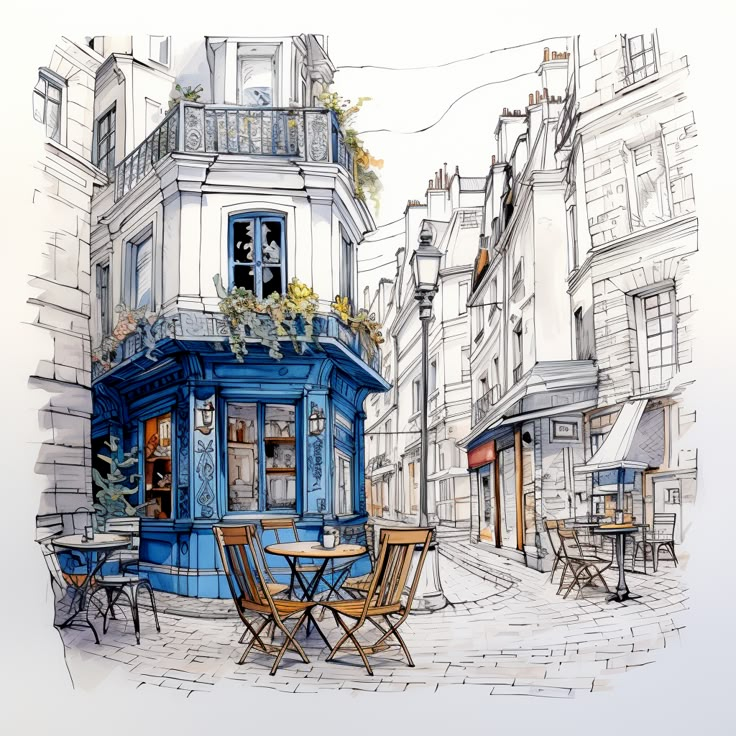
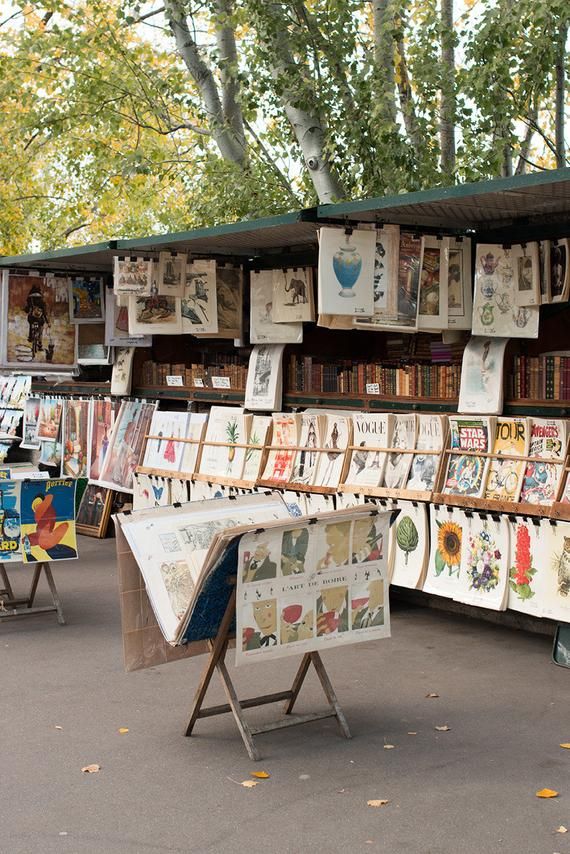
Composition and Perspective
Effective composition and perspective are essential for creating dynamic urban sketches. By mastering the horizon line, identifying vanishing points, and using geometric shapes, you can enhance the realism and depth of your drawings.
Constructing the Horizon Line
The horizon line serves as your eye level in a sketch. It establishes the viewer’s perspective and influences how elements are arranged in your piece.
To construct it, find the level that corresponds to your eye position in relation to the scene.
Tips for a strong horizon line:
- Use a ruler for precise placement.
- Keep it straight and clear.
- Consider how the horizon line interacts with other elements, like buildings or trees, to maintain balance.
Identifying the Vanishing Point
The vanishing point is where parallel lines seem to converge in the distance. It plays a crucial role in depicting depth.
Pinpoint this location relative to your horizon line. If you’re drawing a street scene, for instance, lines from buildings and sidewalks should lead to this point.
Steps to efficiently identify the vanishing point:
- Visualize straight lines, such as edges of structures.
- Mark the point where these lines converge.
- Use this as a guide to shape your composition, drawing everything towards this focal point.
Employing Geometric Shapes
In urban sketching, geometric shapes simplify complex structures. They serve as building blocks for your drawings.
Identify basic shapes in the scene—rectangles, triangles, and circles can form the outline of buildings, street lamps, and more.
Benefits of using geometric shapes:
- Provide a structured way to build perspective.
- Enhance accuracy in proportions.
- Allow you to break down a scene into manageable sections for easier rendering.
By applying these concepts, you can create more compelling and accurate urban sketches, effectively capturing your surroundings.
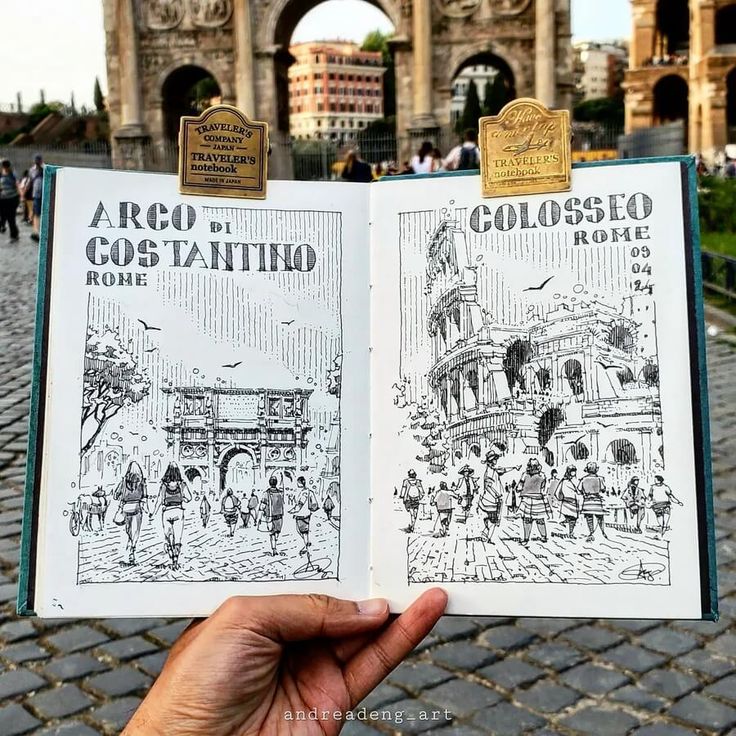
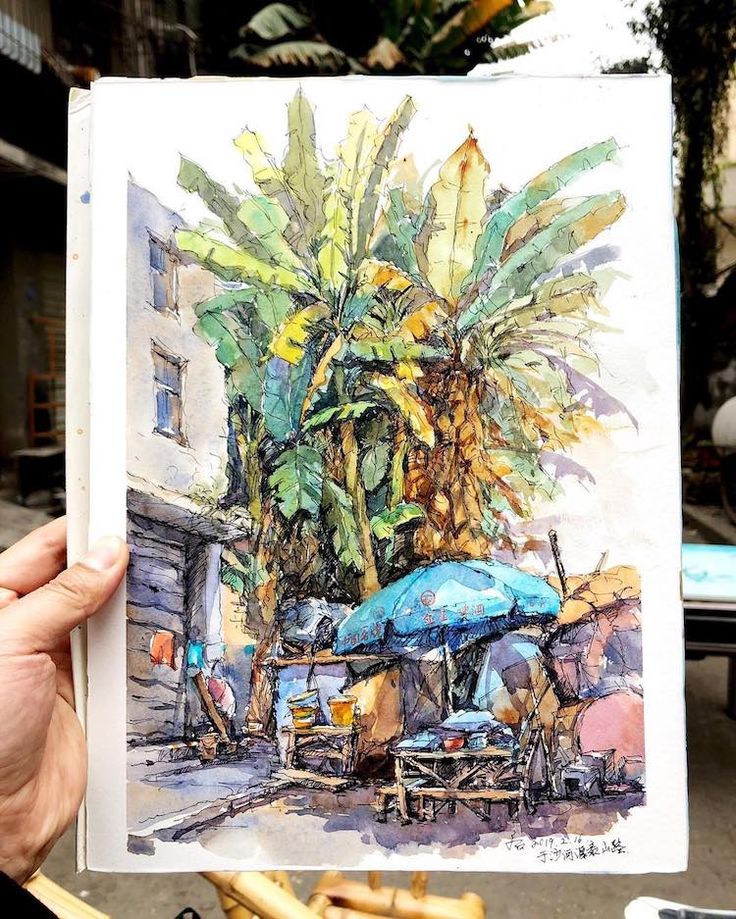
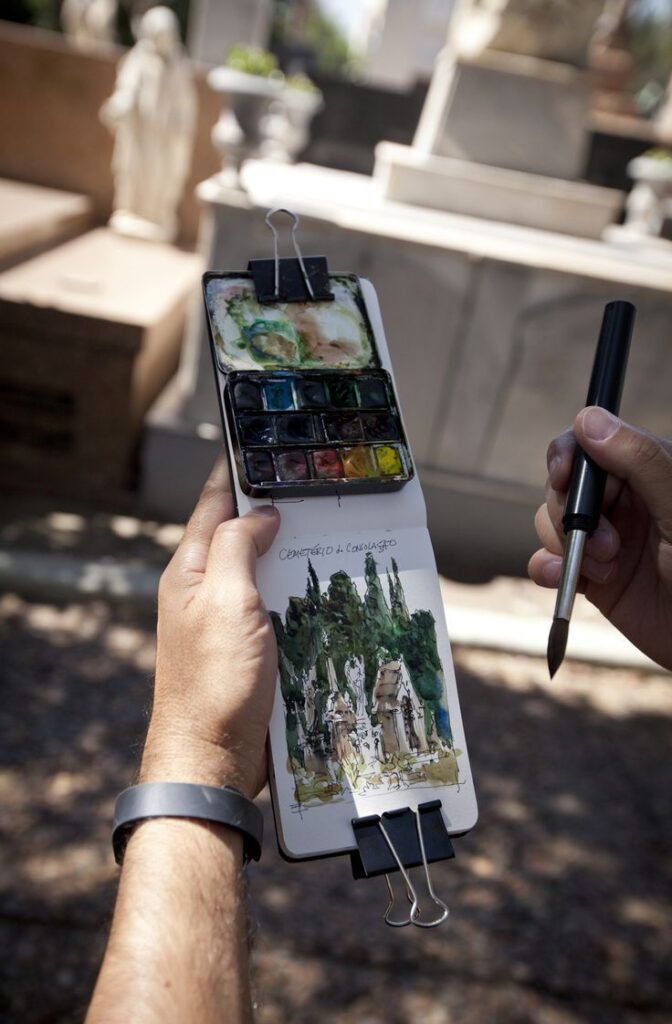
Adding Life to Sketches
To truly bring your sketches to life, focus on capturing the vibrancy of people and urban environments. By integrating dynamic elements like crowds and color, your work can reflect the energy of street scenes and urban landscapes.
Sketching People and Street Scenes
When sketching people, aim for fluidity and movement. Capture candid moments by observing your surroundings in cafes or parks.
You can start by drawing basic shapes to establish posture. Focus on gestures rather than details initially. Use quick lines to indicate motion.
For street scenes, include architectural elements that provide context. Capture the flow of pedestrians and the arrangement of buildings. This not only enhances your composition but also tells a story of the place.
Incorporating Color and Shading
Adding color elevates sketches significantly. Choose a palette that reflects the ambiance of your location. Warm tones can evoke a lively cafe atmosphere, while cooler hues may suit more serene settings.
Shading techniques can deepen your sketches. Use hatching or cross-hatching to add texture. Experiment with blending techniques to create depth and dimension.
Be mindful of light sources to maintain realistic shadows. Integrating these elements effectively enhances the overall vibrancy and impact of your urban sketches.
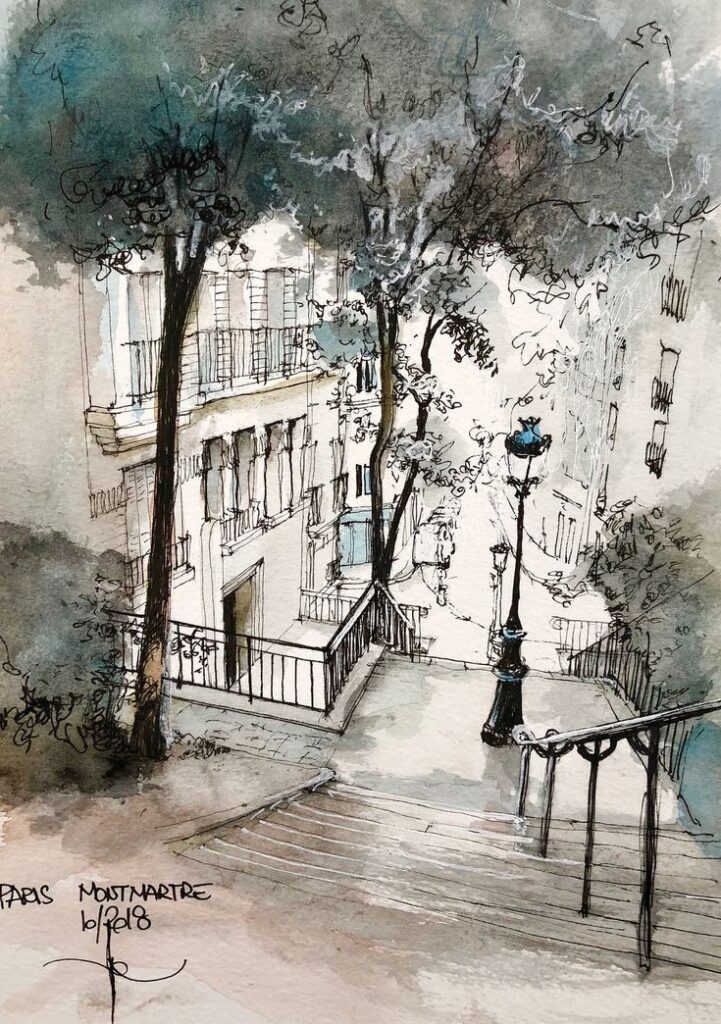
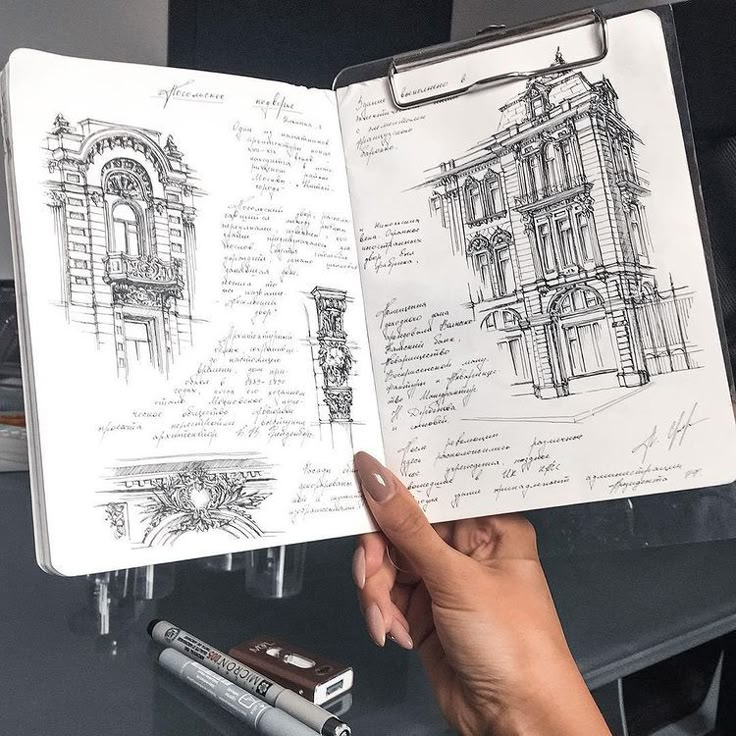
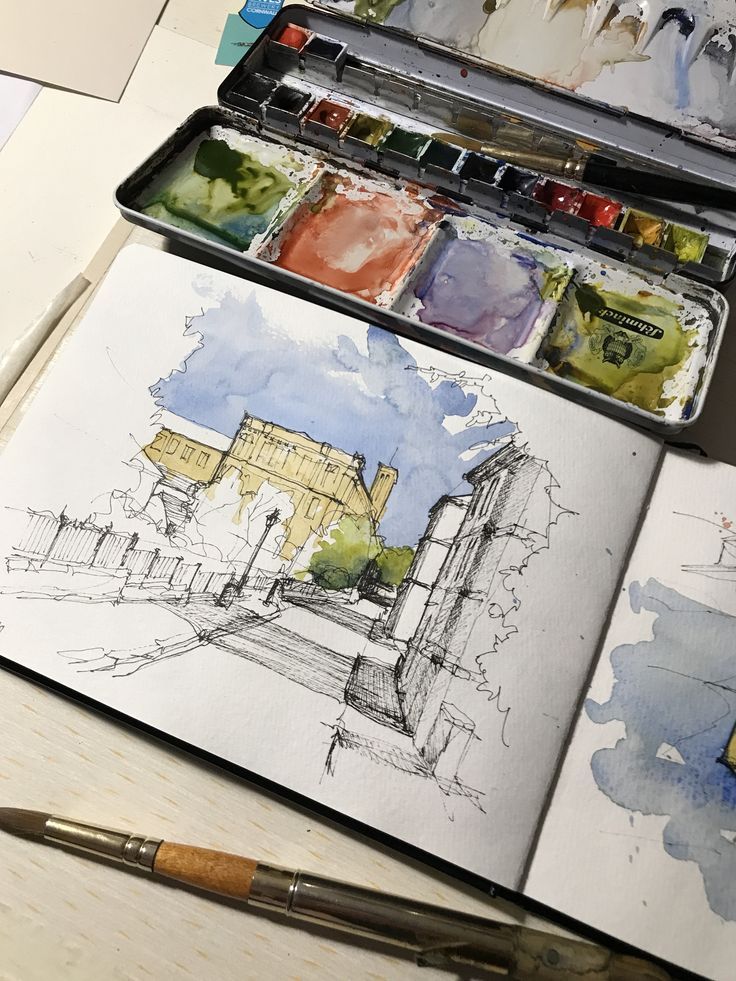
Community and Events
Engaging with fellow artists through community events enhances your urban sketching experience. Two key opportunities for connection include joining sketch crawls and participating in international symposiums.
Joining Sketch Crawls
Sketch crawls are organized outings where artists gather to draw specific locations. These events promote observation skills as you experience scenes together. Typically lasting a few hours, participants use varied art supplies like Sakura Micron pens, colored pencils, and waterproof ink to capture the environment.
A typical sketch crawl might involve rotating locations, allowing for diverse perspectives. You can learn quick sketching techniques from your peers while sharing constructive feedback. This collaborative approach fosters a sense of community and improves your craft.
Networking with other sketchers can also lead to additional opportunities, like workshops and exhibitions. Look for local groups or online platforms to find upcoming sketch crawls in your area.
Participating in International Symposiums
International Urban Sketchers Symposiums bring together artists from around the world. These events feature workshops led by experienced sketchers, including notable figures like Gabriel Campanario. Participating allows you to deepen your skills in various techniques.
Symposiums often include lectures and group sketching sessions set in unique locations. This setting challenges you to adapt your style and learn from global perspectives. The experience of sketching alongside international artists enhances your understanding of diverse urban environments.
Additionally, these events provide access to specialized vendors offering unique art supplies, allowing you to experiment with new tools. Joining such gatherings enables you to expand your artistic network and immerse yourself in a community of passionate sketchers.
- 60shares
- Facebook0
- Pinterest60
- Twitter0
